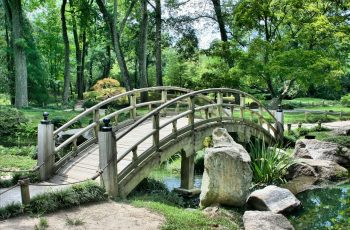How to Landscape Your Yard with These Incredibly Easy Methods That Work for All
If you're interested in learning how to landscape your yard, you'll find that discovering the right steps and tips is the key to creating a landscaping plan which is rock-solid. When you do it yourself, you'll learn to landscape like the experts do and you’ll save money by using your very own “sweat equity”!
As well, you'll enjoy the feeling of fulfillment that comes from being out in the fresh air, creating the landscape of your dreams. Creating your own garden design will be fun!
Your home is the biggest investment that you'll ever make and landscaping your yard effectively will positively impact its curb appeal, comfort, and resale value.
Today, we'd like to share some expert tips on how to landscape your yard which will make it easier for you to move through the process…without missing a single thing!
Create a Blueprint for Your Landscaping
Start by sitting down at your kitchen table with some paper and a pencil. You'll need to come up with a layout of how you want your yard to look. It's much easier to work with some type of blueprint, no matter how crude it is. A good layout is one of the secrets of how to landscape your yard effectively.
Create separate layouts for the front yard, side yard(s) and back yard. This will break down the process of landscaping into organized sections. Map out the placement of hard landscaping materials and figure out where flower beds should go.
Think about what type of trees, shrubs, and flowers you want to plant. If you want a vegetable garden, consider its placement and then add it to the right layout. Part of knowing how to landscape your yard is knowing what you want!
Once you have a rough layout of your landscape design, you'll be ready to spring into action!
Begin at the Front
Smart DIY landscapers begin in their front yards because they are visible to everyone who walks or drives down the street. With this in mind, we think that you should focus on this part of your property first in order to improve your curb appeal. In addition to looking great, your front yard landscaping needs to function well. Consider beauty and functionality when considering how to landscape your front yard.
To get started, get the hardscaping done first. In case you're unfamiliar, hardscaping is adding hard landscaping materials to an exterior space. Examples of hardscaping elements include (but are not limited to) porches, driveways, decks, and arbors.
Hardscaping typically involves some sort of construction, whether it's simple, moderately complex or complex. When it comes to landscaping your yard, it's best to get hardscaping out of the way first and then add other softscape design elements later.
Softscaping is adding live horticultural elements, such as trees, flowers, and shrubs. Establishing a balance between hardscaping and softscaping will be helpful as you learn how to landscape your yard.
The rationale behind hardscaping first is that doing it later on in the landscaping process may lead to soil compaction or damage to tender and fragile plantings and turf. When you do hardscaping first, you'll avoid this type of soil compaction and damage!
Next, it will be time to put organic matter into your soil. This is a vital part of landscaping your garden. Examples of organic matter which is commonly utilized in order to improve soil quality are leaf mold, peat moss, pine bark which is finely shredded and compost made from mushrooms.
These forms of organic matter make soil looser and more fertile. After you boost soil quality, lay out your bed lines (some people use a garden hose to represent each bed line and then mark the line with a can of spray paint).
It's Time to Plant the Front Beds
Now, you've put together a layout, hardscaped, prepared your soil and marked your bed lines, you are ready to plant!
Before planting, consider your home's facade. Part of how to landscape your yard effectively is about making the yard a perfect complement to your home. You want to make sure that key design elements are not covered by high-growing shrubs. Instead, choose low-growing shrubs for key areas, such as the beds which are under lower windows and/or front porches.
We recommend making a compact bed in the front yard and then planting some bright and pretty flowers. It's such an easy and fun way to make a home look beautiful!
How to Select Appropriate Plants for Your Front Yard
The key to choosing the right plants is knowing your landscape well. For example, where does the sun rise and where does it set? Certain plants thrive when they receive morning sun, but don't do well with hot Western sun. If you have questions, we recommend talking to a pro at a garden center. Staff members at these retail outlets will know which plants, trees,
If you have questions, we recommend talking to a pro at a garden center. Staff members at these retail outlets will know which plants, trees, shrubs, and flowers are right for your landscape (and for the local climate in general). They will assist you as you develop your landscape design and flower beds.
Also, consider the color palette of flowers. It's best to choose no more than a couple of complementary tones. Too many colors tend to overpower. They are hard for the eye to absorb and appreciate. Your sense of color and proportion will come in handy as you learn how to landscape your yard.
To finish your front yard landscaping, add window boxes and hanging baskets if you wish to. They are charming additions which add a lot of beauty and character in an instant. Once you've finished the front yard, repeat the same steps in the back yard and side yard(s). Putting the right finishing touches in place is part of knowing how to landscape your yard to perfection.
Why not start the project today?
You can find more resources below from the experts here at Better Landscaping to help you decide on your landscape designs:

